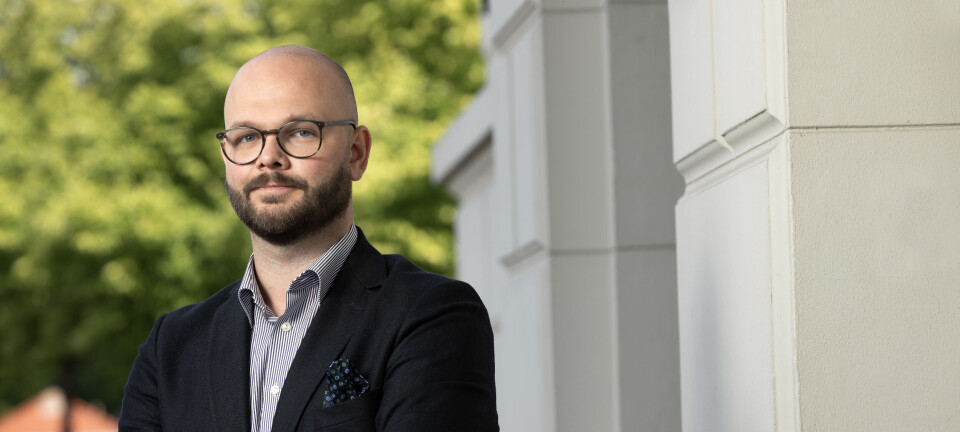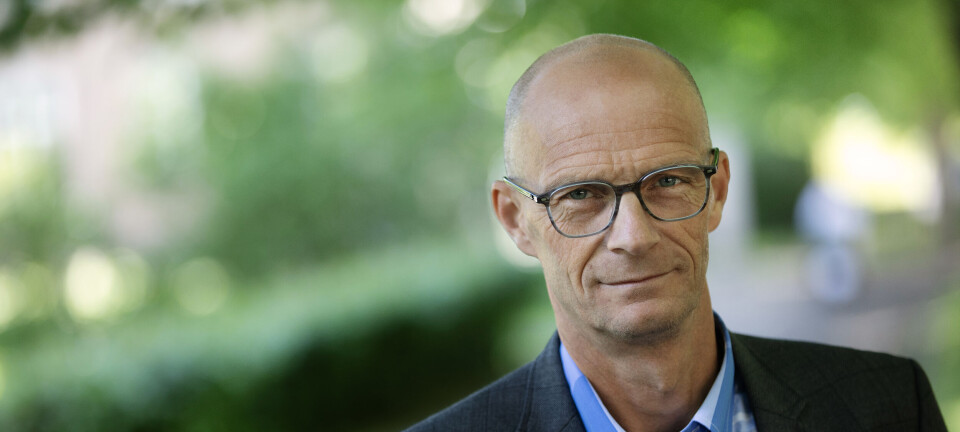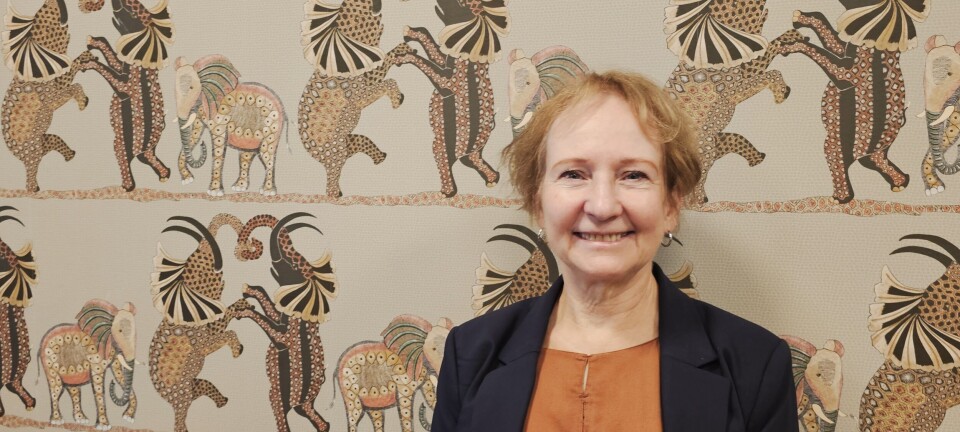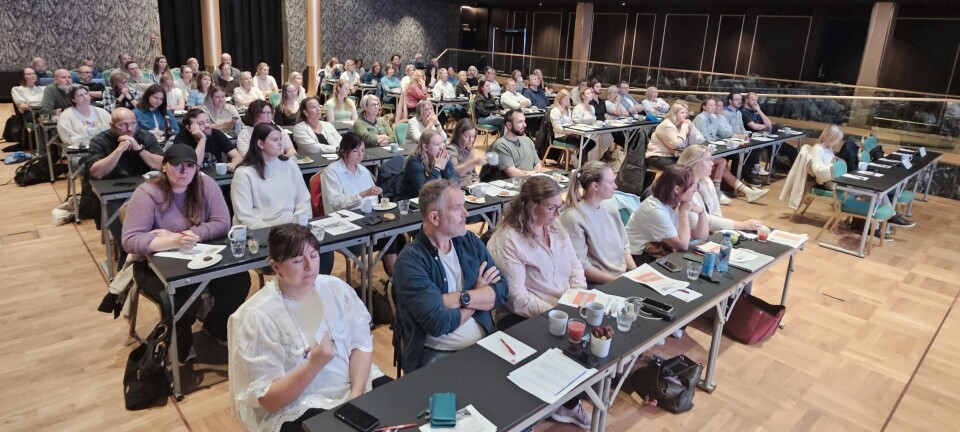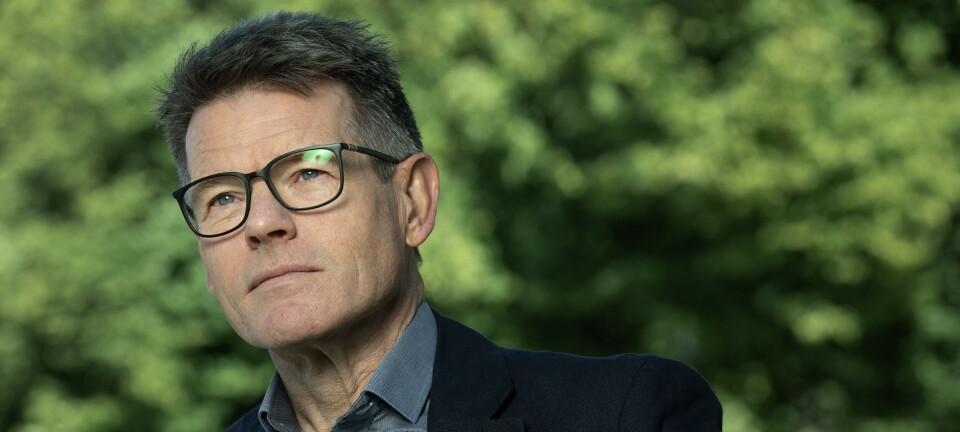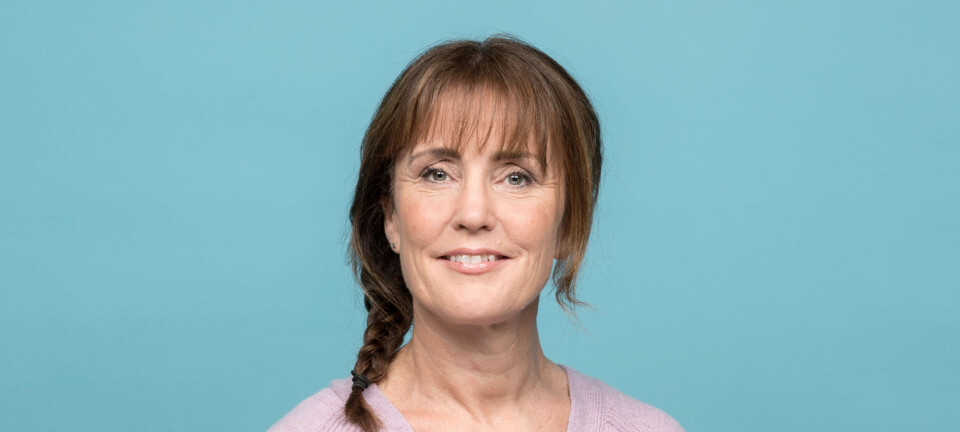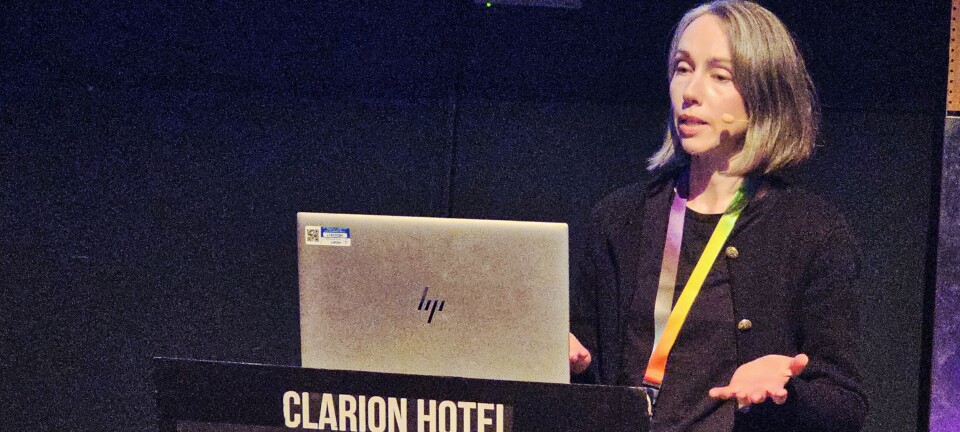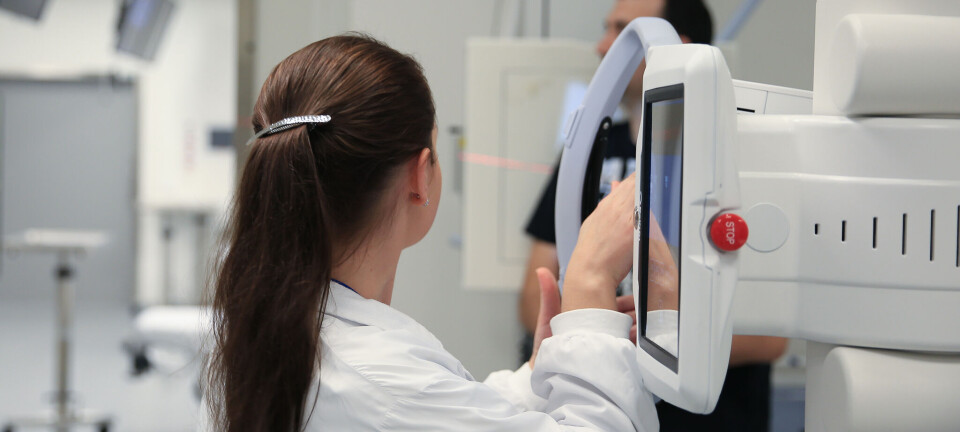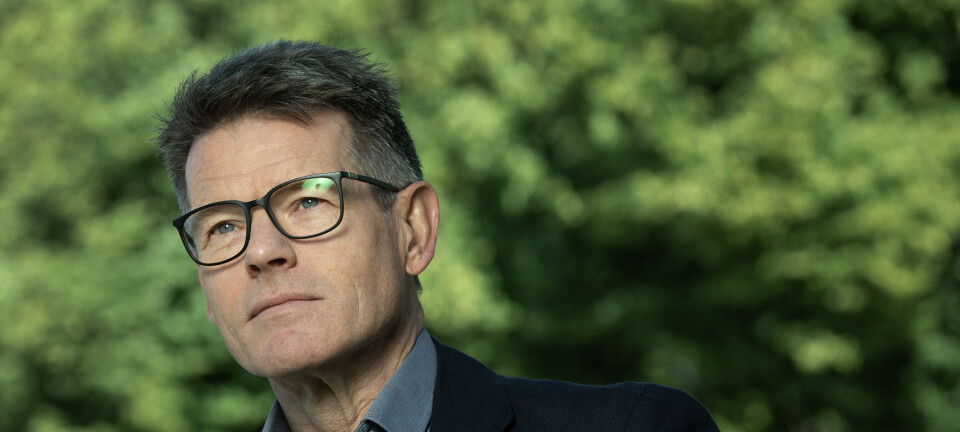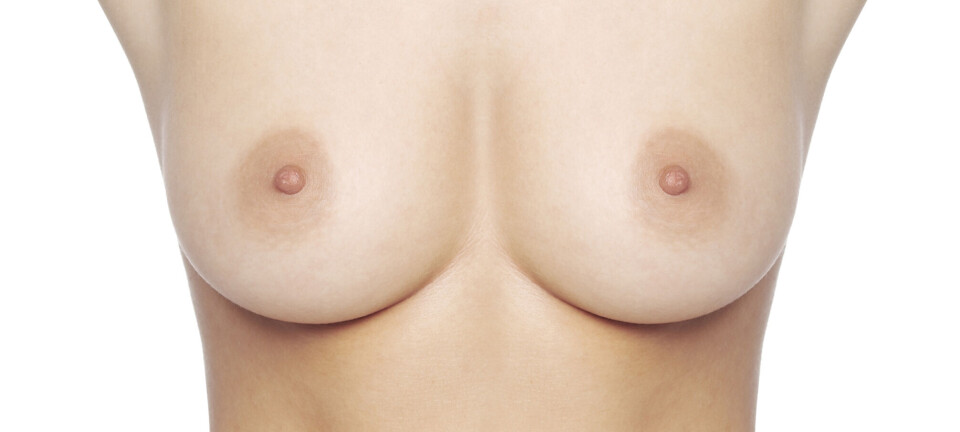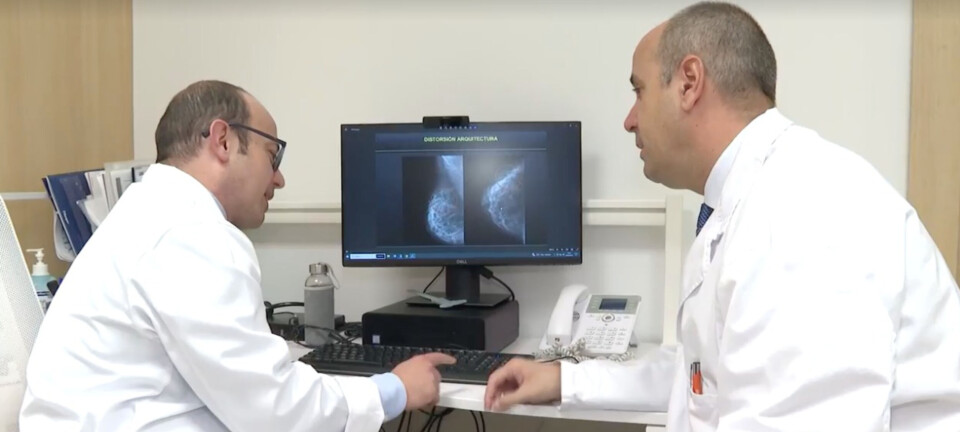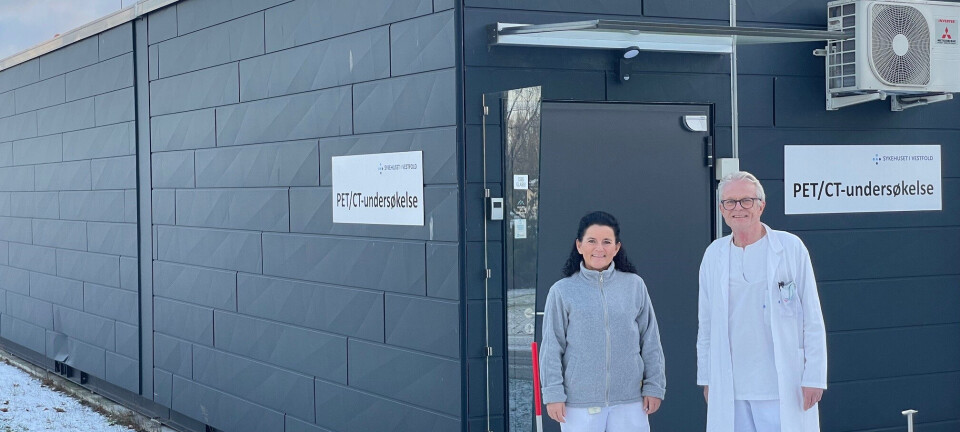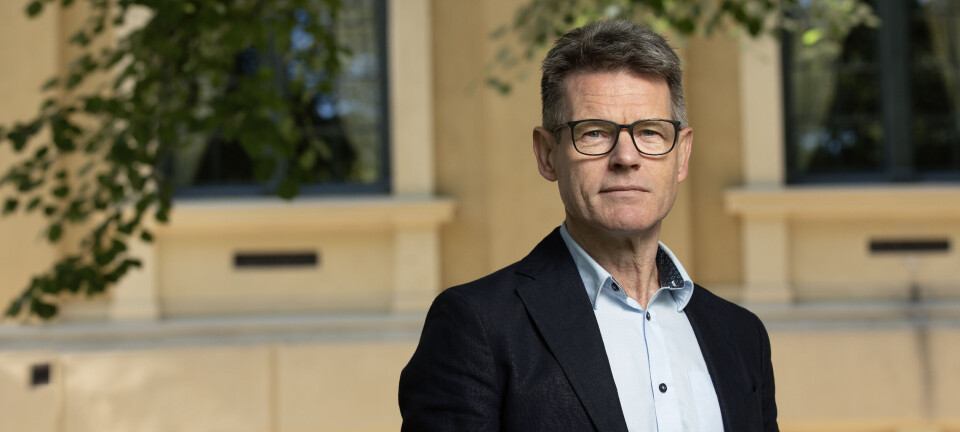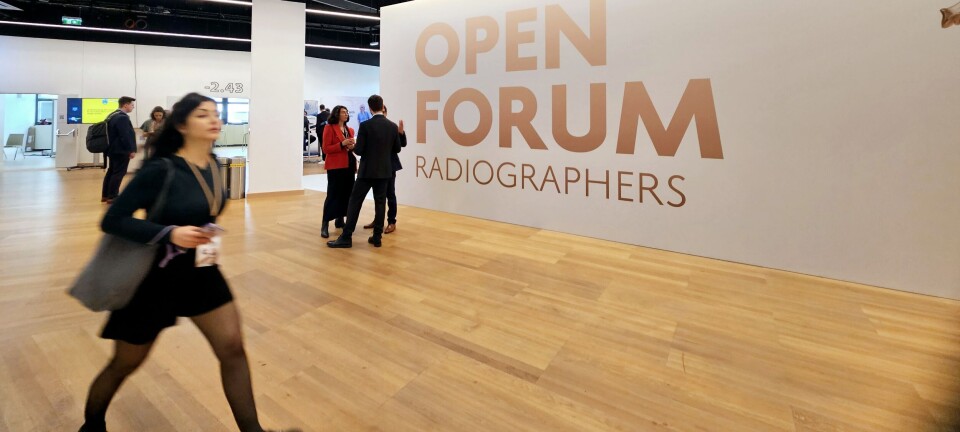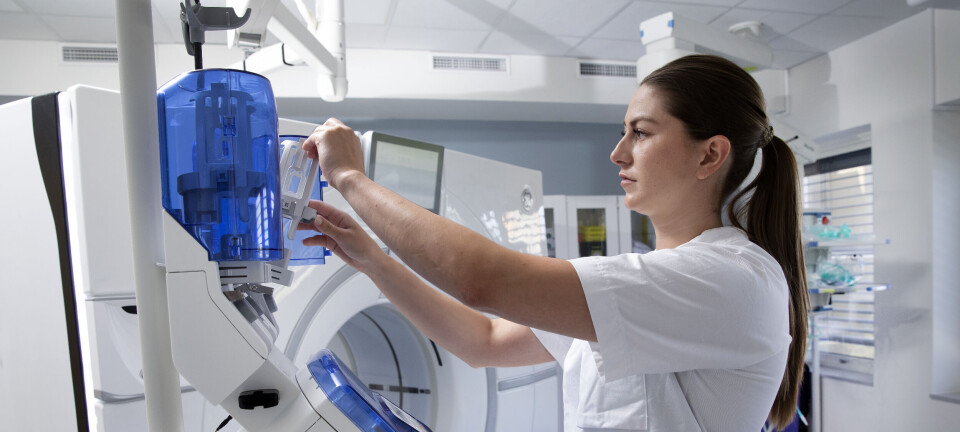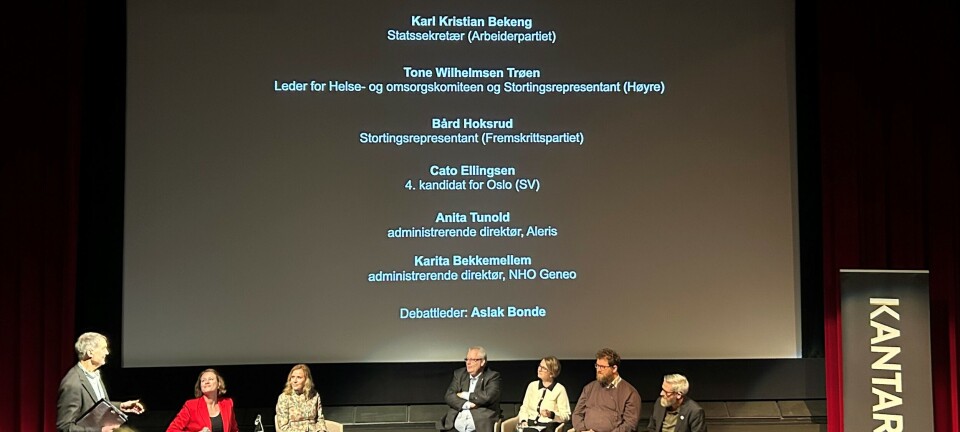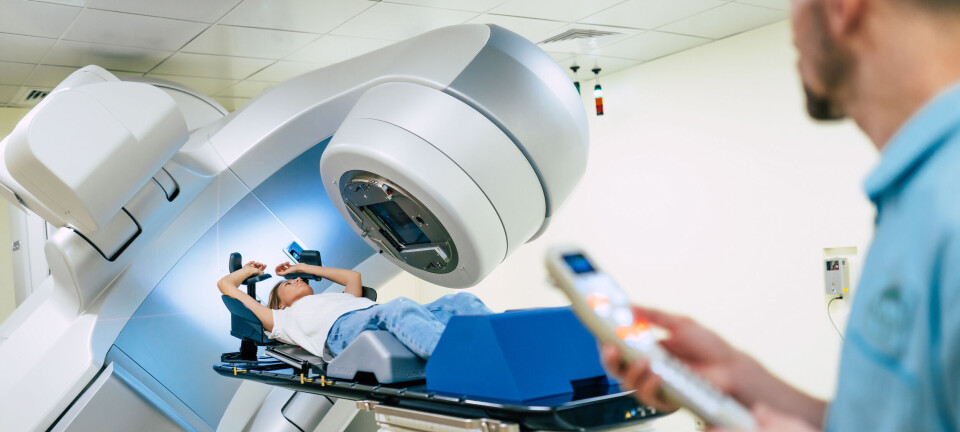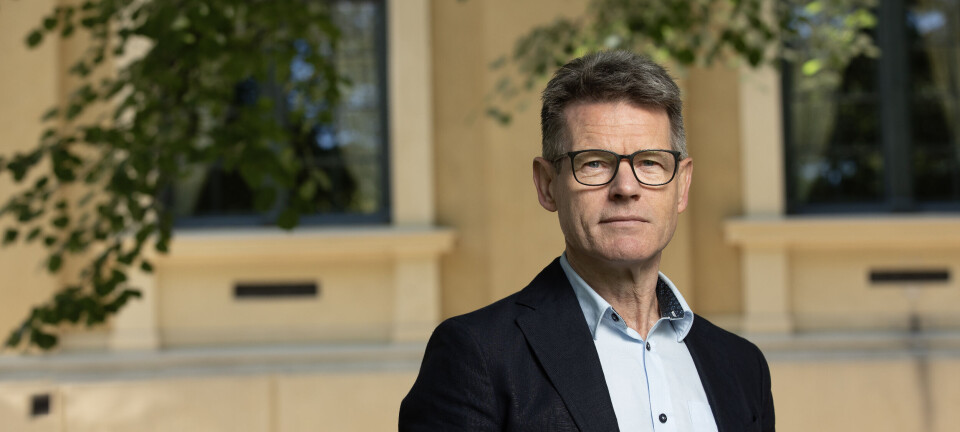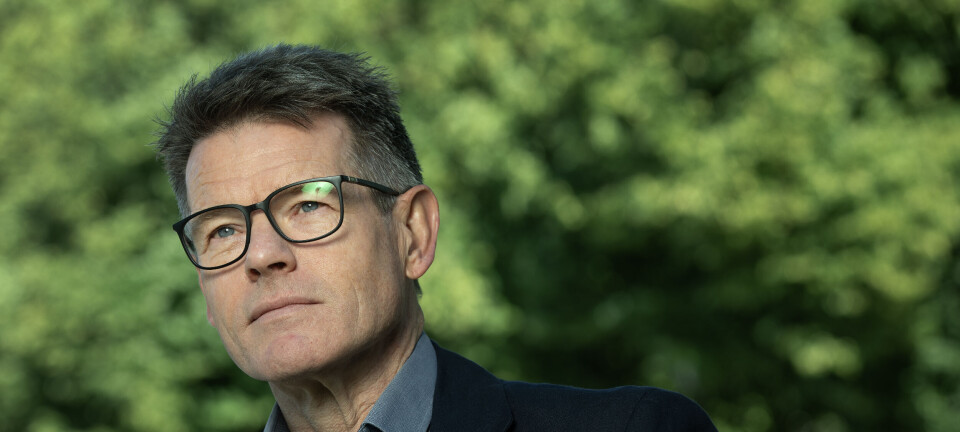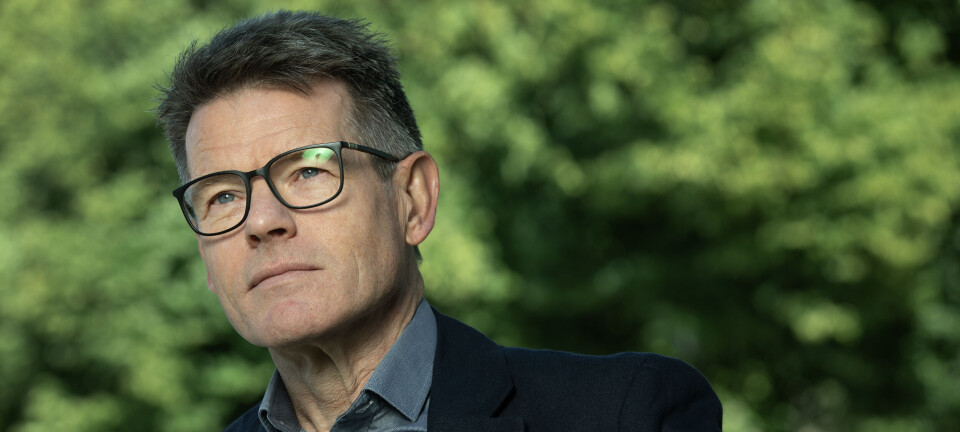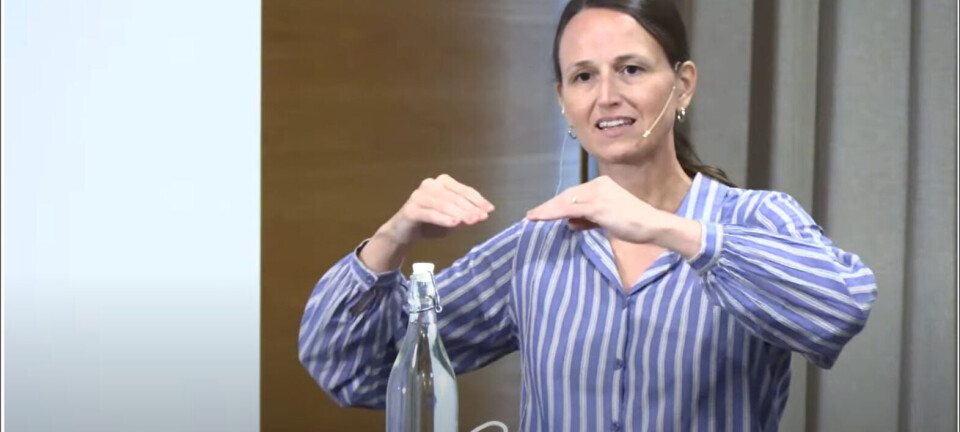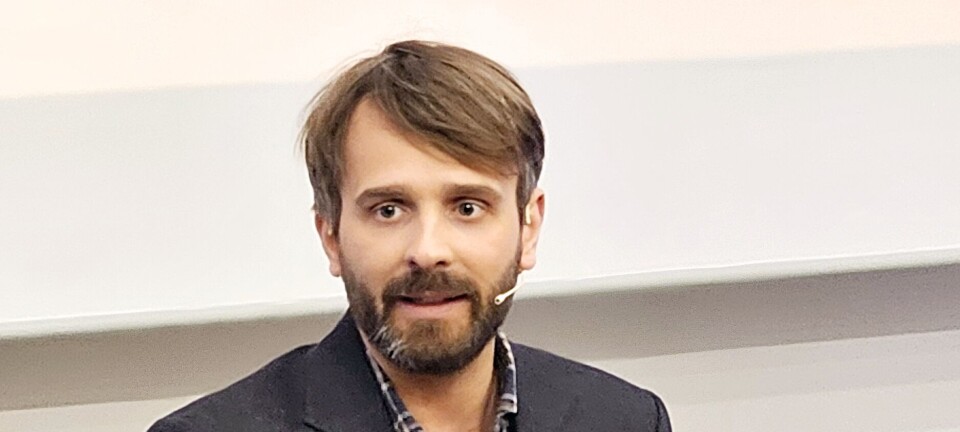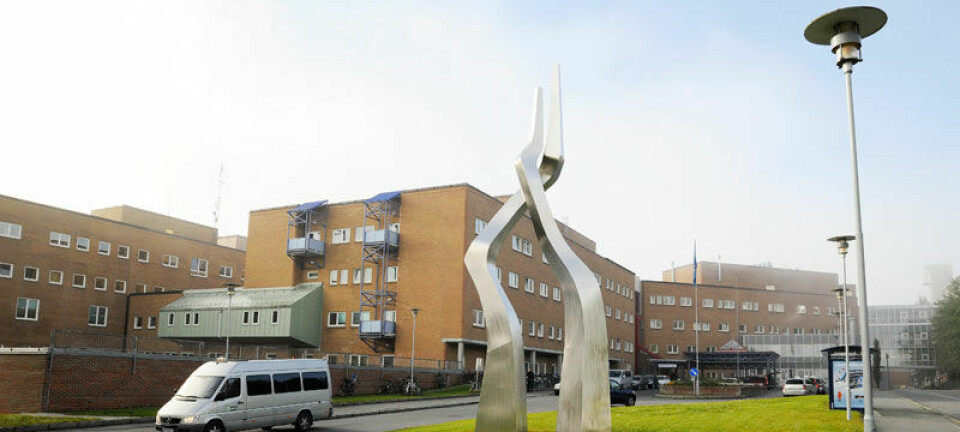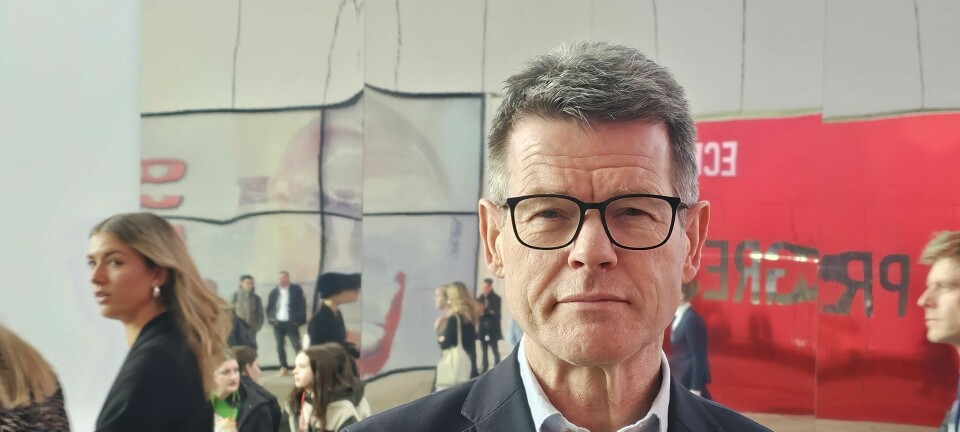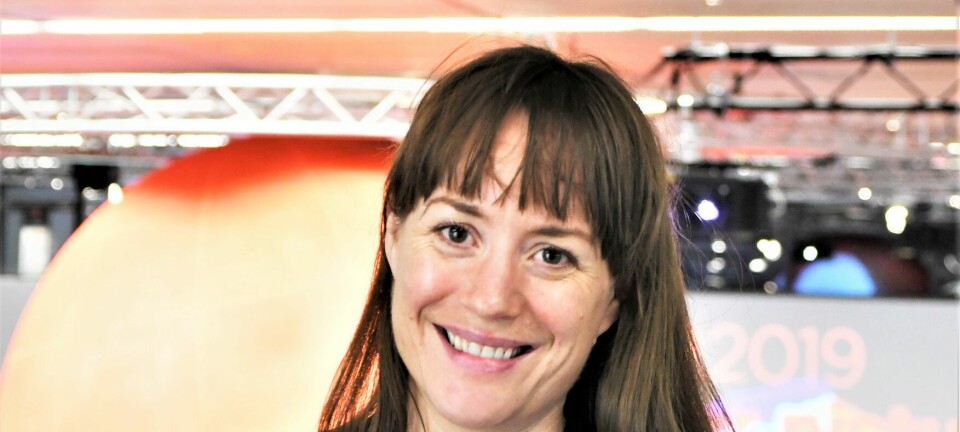Kari Gerhardsen Vikestad (f.v.), Kristin Heggen og Eline Rostad holdt faglige innlegg på årets ECR. Foto: Tone Stidahl
Dyktige radiografer på årets ECR
Både Kari Gerhardsen Vikestad, Kristin Heggen, Eline Rostad og Sundaran Kada holdt faglige innlegg på årets ECR-kongress i Wien.
Gerhardsen Vikestad, Heggen og Rostad er kolleger på Oslo universitetssykehus, og hadde øvd sammen på forhånd - blant annet i auditorium. Foredragene skulle være på bare syv minutter, og måtte dermed skreddersys for dette. Gjennomføringen gikk utmerket. Også Sundaran Kada fra Høgskolen i Bergen holdt innlegg på årets ECR-kongress 1.-5- mars.
I Hold Pusten nr. 3 (utgivelse 10/4) kan du lese mye mer om ECR-kongressen.
Her er sammendrag av de fire aktuelle foredragene:
B-0490 Educational programme for radiography students at CT
K. Heggen, E. Johansen, R. Silkoset; Oslo/NO Purpose: An educational program was designed to improve relevant competence in brain anatomy, pathology, CT technique and physics among radiography students training at Oslo University Hospital, Ullevål. Methods and Materials: The educational program consisted of lectures, a compendium, practical lessons and competence testing. The lectures and compendium focused on brain anatomy, pathology, CT technique and physics. All second year radiography students at the University College in Oslo completed the same competence tests before and after their hospital training. This allows a comparison of the competence improvement among students who followed the educational program, with students training elsewhere (the control group). The second year class comprises 40 students. 29 took the initial test. Out of this number 12 participated in the project while the remaining 17 (the control group), did not. 30 students took the final test. 3 students who actually took part in the project opted out of the final test, reducing the number to 9 while the number of students in the control group was increased to 21 because 4 students who did not take the initial test joined the control group at the final test. Results: Radiography students who participated in the educational program improved their test score from 31 % to 61 %, while the control group improved their score from 33 % to 34 %. Conclusion: This study demonstrates a pronounced improvement in level of competence among students who followed the educational program. B-0721 How to increase the participation rate among non-European immigrants in the mammography screening programme in Oslo, Norway
E. Rostad, R. Gullien, H. Linnestad; Oslo/NO Purpose: To increase the participation among non-European immigrants at the mammography screening. Studies shows that less than 1 in 4 woman from minority groups knows about mammography screening and breast cancer despite the fact that breast cancer is a common cause of death among women in the group. Non-European immigrants in Oslo have low participation rate in the screening programme. Methods and Materials: The department focused on the largest minority groups with women speaking Urdu, Arabic and Somali. Posters in these languages and Norwegian with a summary about mammography screening were printed and sent to all general practitioners in Oslo and hung up in public places and health offices in districts with many women from minority groups. Radiographers from the department visited women’s groups and informed about mammography screening and breast cancer. Not all women can read their native language so there were broadcasted several radio shows in Urdu, Arabic and Somali. Results: The general practitioners are pleased with the posters and inform their patients about mammography screening. The response at the meetings in the women’s groups has been successful. The attendances at the meetings were doubled; the women were involved and asked relevant questions. During the radio show women called to comment on the topic. There has been increased participation from non-European immigrants at the mammography screening. Conclusion: It is important to continue the ongoing work and include new initiatives to increase the participation among non-European immigrants in the mammography screening programme. B-0723 Evaluation of the first radiographers with additional degree in ultrasound: to what extent are the learning objectives achieved 6 months after graduation?
K.G. Vikestad1, E.N. Eikefjord2, B.M. Hofmann1; 1Oslo/NO, 2Bergen/NO Purpose: The purpose of this study was to compare ultrasound (US) findings of advanced radiographer practioner (APR) and experienced radiologists. To see if APR manage to separate positive and negative examinations from each other, number of pictures, time to exam, technical image quality, significant findings and ability to perform reports. Material and Methods: The study was conducted as a quantitative prospective controlled study including 244 patients, five APRs and four experienced radiologists. All patients underwent ultrasound examinations by an APR and a radiologist. The APR were not given the opportunity to consult a radiologist during the examinations and they were blinded for each others findings. They separately registered, time per examination, number of images, incomplete examinations, confidence in own findings. The examinations performed by the APR were evaluated by radiologists for technical image quality, the ability of the APR to make significant findings and additional findings, ability to perform diagnostic reports, and an overall evaluation of their examinations. Statistics in the study: Cohens Kappatest, Chi-square tests and paired t-test. Results: The radiologist and APR showed findings conform at 95.1%. In 99.2% of the examinations the radiologists gave the APRs “best” or “medium best” score in overall confidence. 99.2% of the examinations had a technical quality superior or equal to the examinations performed by radiologists. Conclusion: This study indicates that APR are qualified to perform US examination in upper abdomen in safe way in Norway, equal to radiologist given that they undergo a qualified education. B-0580 A study of the awareness of x-ray radiation doses among Norwegian student radiographers
S. Kada; Bergen/NO Purpose: To assess the level of student radiographers’ knowledge concerning both the radiation doses received by patients undergoing commonly requested radiological investigations and the associated risks of these doses. Methods and Materials: A survey was sent to all radiography program teachers in charge (n=6) in Norway, along with a request to administer the survey to final year student radiographers in their final term of study. The questionnaires pertained to radiation-related issues and demographic information. Results: The response rate was 79 % (122/155). The majority of the student radiographers reported poor knowledge of radiation doses. They were either ignorant of or underestimated the radiation doses used in the various imaging examinations. Only 4 student radiographers answered more than 50 % of the items in a questionnaire designed for assessment of their level of knowledge correctly. Overall 63 % (n=77) of the student radiographers were not aware of the radiation dose received from a chest x-ray, and 64 % (n=78) of the students were ignorant of the annual dose limit for the patients. The study identified no statistically significant differences among radiography institutions (p=0.08) and between genders (p=0.61). Conclusion: Overall, final year student radiographers’ knowledge regarding radiation doses and the risks associated with ionising radiation is reported to be poor.









